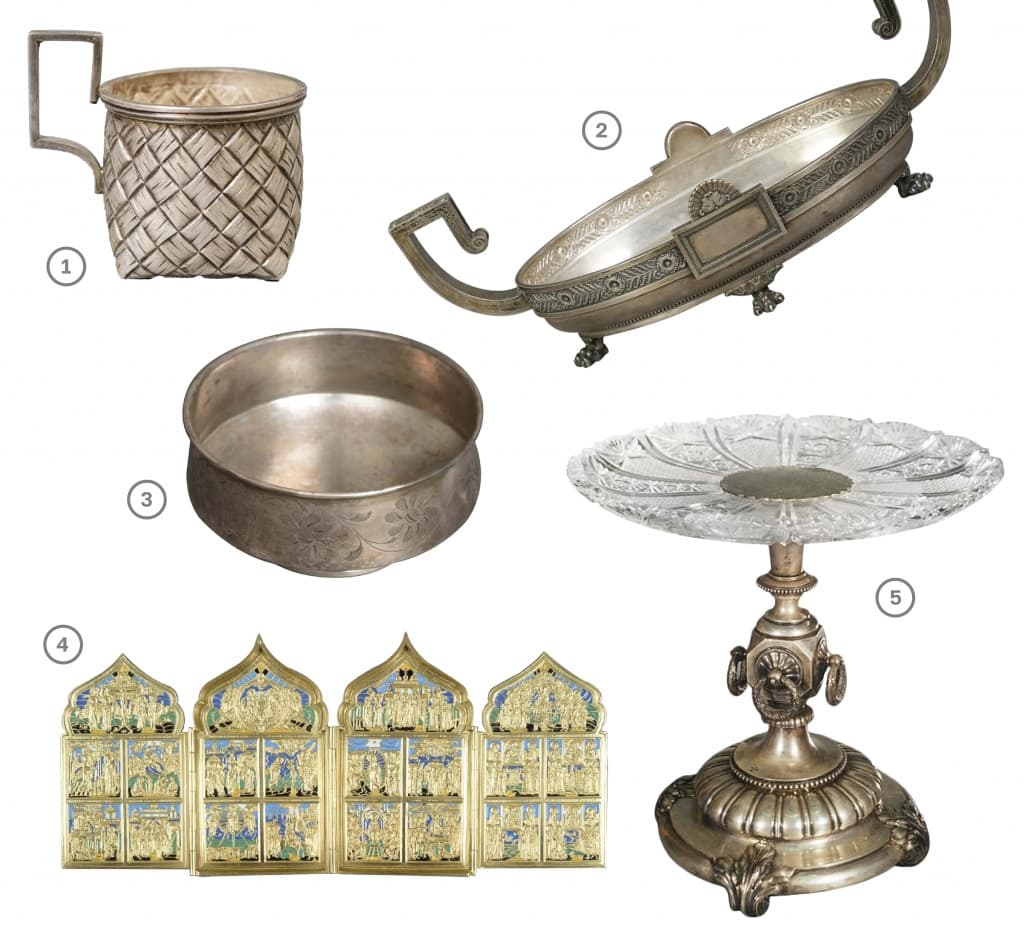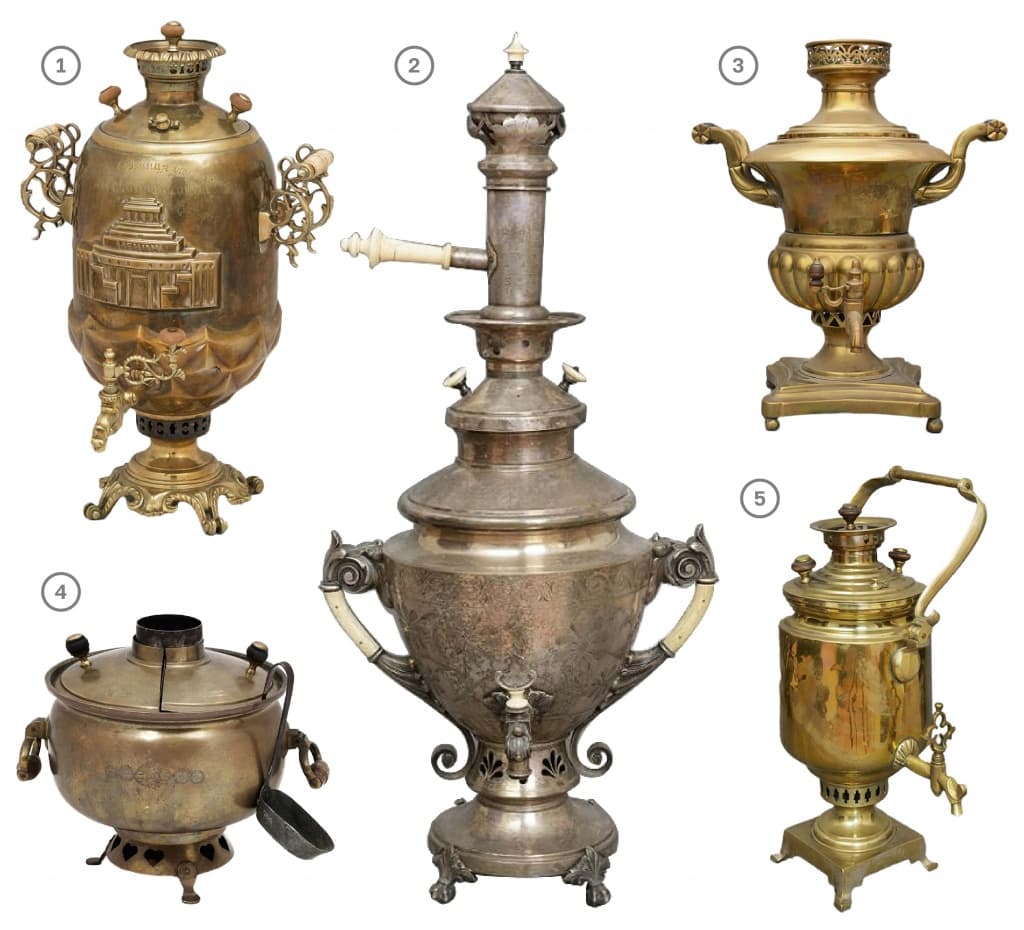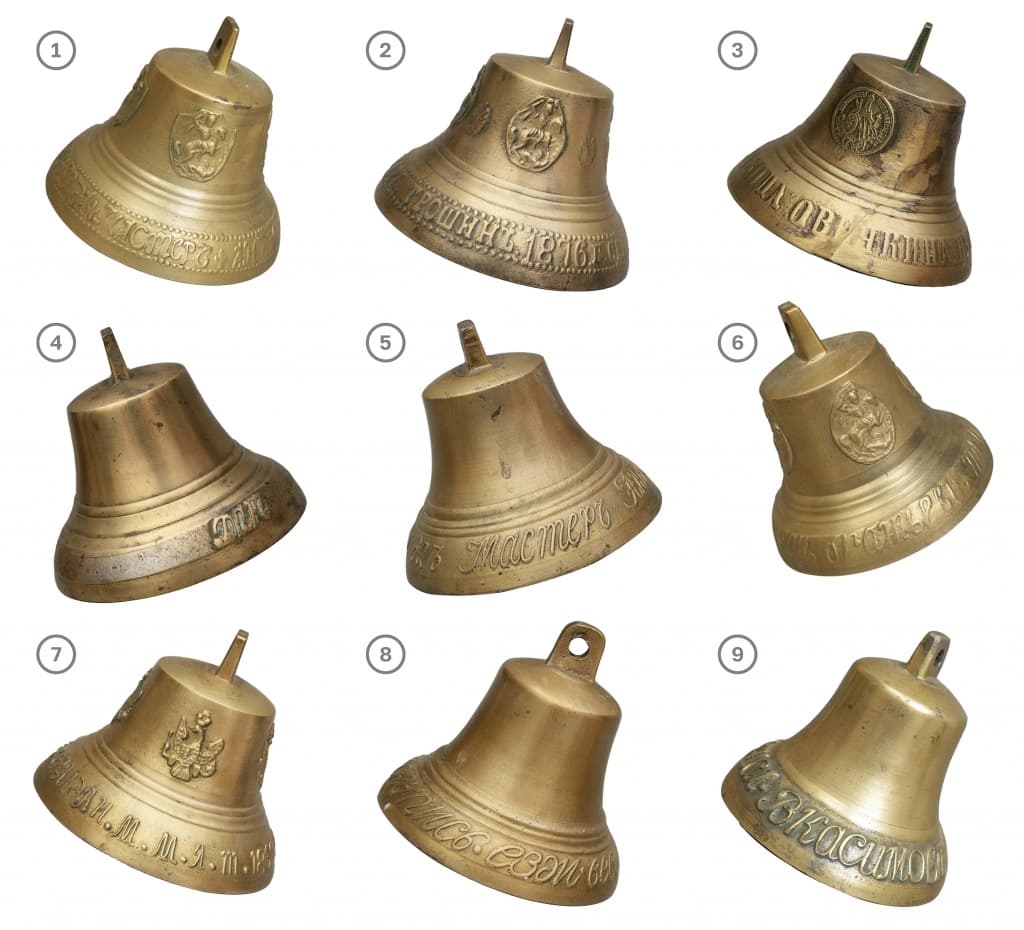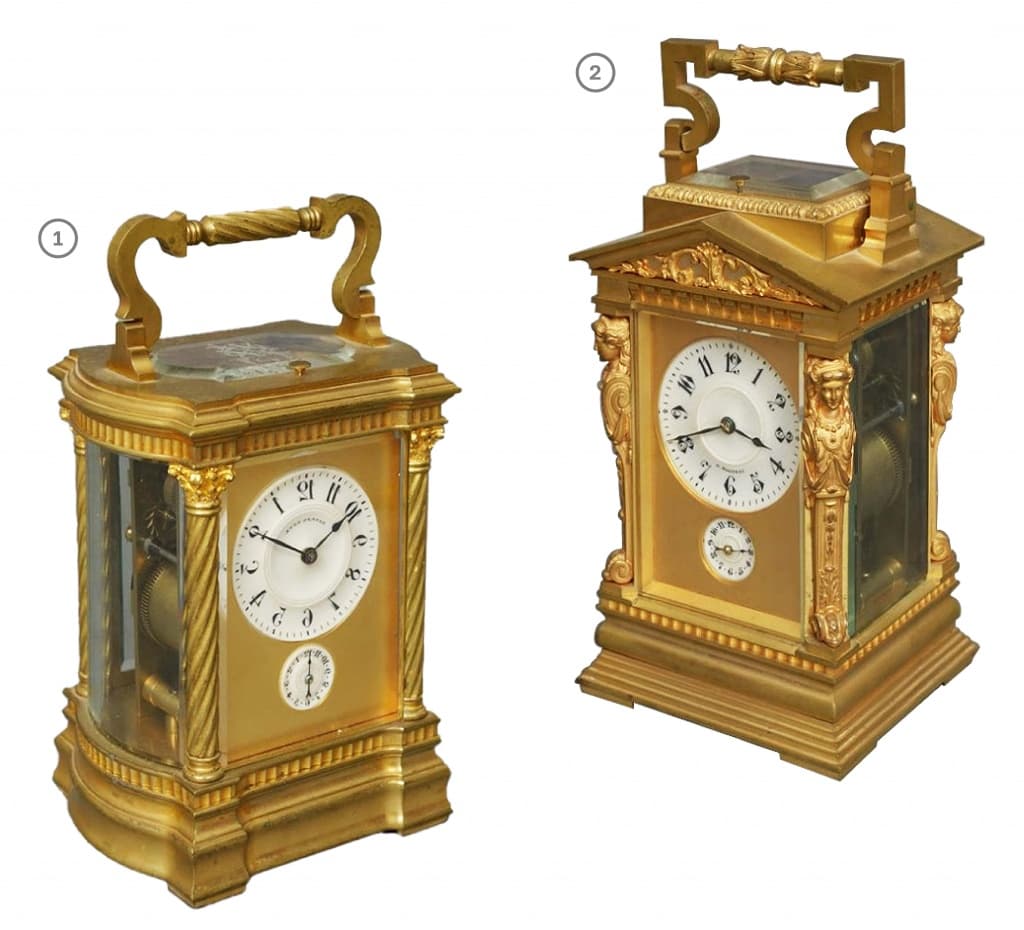
It is a well-known fact that works of art, future exhibits of collections, entering museum collections are "naturalized", acquire citizenship in different ways. Some become events that are not forgotten, others are retained only in memories and transferred into the domain of museum histories.
It is said that one day in the late 1980s a very ordinary citizen came knocking at the museum's registration office with a hole in his handbag, through which a newspaper parcel was peeping. He introduced himself as Gennady Andreyevich Kubryakov, said he wanted to make a gift to the museum, collecting national art, and carefully unfolded the newspaper. From it, a magnificent polychrome vase in the Russian style emerged, which delighted the audience. This was the beginning of the formation of personalised collections - donations that are not just part of the correct section of the museum collections, but retain the inimitable individuality of the author's collection. And Gennady Andreyevich Kubryakov, by donating his valuable collection of metalware, becomes one of those who help preserve Russia's national treasure. It is no coincidence that the search for artistic objects with Russian traditions, Russian roots, has become the main objective of his collecting.

1. Stand to stack. Unknown master with the initials IIN. Saint Petersburg. 1882. Silver, engraving, chasing. 2. Silver stand from a fruit vase (stand from a jardiniere). The Carl Faberge firm, Moscow branch. Early XX century. Silver, chasing, stamping, molding. 3. Rinsing bowl. Frazier firm. Poland, Warsaw. 1870-1880s. Copper, engraving, electroplating. 4. Four-branched hinge "Twelve Holy Days". The second half of the XIX century. Copper, colour enamels, emblazoned enamel, cast. 5. Vase for fruit. The firm of the Grachev brothers. St. Petersburg. 1895. Crystal, silver, embossing, casting, crystal facets
Valery Alexandrovich Dudakov, an experienced collector and vice-president of the Soviet Culture Foundation, recalls the 1960s-80s: "All of us who used to collect were enthusiastic people. They were, The Collectors. And they would not sell, even at triple the price of an expensive item. They were treated like a beloved wife, like a pet. That is, something you wouldn't sell for any money. These people systematically studied the items in their collections. We sometimes waited 20-30 years for the coveted item".
The vase, a gift from Gennady Andreevich, today became a decoration of the museum exhibition "Russian Style. From historicism to art nouveau", the object of study. Articles have been written about it and reports have been made at conferences. And the new information about the famous jewellery firm of the second half of the 19th and early 20th centuries, the firm of Pavel Ovchinnikov, has been published.
In 1853, Pavel Ovchinnikov, a former serf of the Volkonsky Princes, opened a small gold and silver workshop in Moscow in the First Potter's Lane on Taganka, which was to become one of the leading jewellery enterprises not only in Russia, but also in the world. Pavel Ovchinnikov's skilfully organized production, his personal qualities and meticulous attention to detailing allowed him to achieve great success in a short time. His story is an example of a truly brilliant career. At 35, the young man already had a fortune of 3.5 million rubles. But to the end of his life, Pavel Ovchinnikov dressed strictly, did not spend money on luxury and an idle life. The former serf managed to understand that the real capital of any enterprise is people. All his workers were paid 3-5 times more than his competitors. The best craftsmen were paid 500-700 roubles (an officer in the Tsarist army received 80 roubles). Several times a year, each worker was given free training courses and invited artists and sculptors (I. Monighetti, E. Lancere, V. Gartman) and even Italian designers worked closely with the masters. The best masters were sent for training to Italy and Germany. All this led to the fact that in five years Ovchinnikov's factory became the largest manufacturer of jewellery in Russia. Regularly participated in all-Russian and world exhibitions, causing admiration for their products. Even the famous Carl Fabergé sensed the competition. The firm "P.A. Ovchinnikov" entered the first category of jewellers and gold and silver enterprises in pre-revolutionary Russia in terms of the significance and value of their work.
For more than half a century, the firm produced the items using virtually all methods of metalwork: chests, caskets, vases, icon cases and more. But the firm was best known for its enamel work. In 1880, Ovchinnikov's factory restored the famous cloisonne enamel lost during the Tatar-Mongol yoke. Jewellery with enamel has become the hallmark of the firm. These items can be distinguished by the remarkable perfection of the technique, and they undoubtedly surpass by far their counterparts. Pavel Ovchinnikov was awarded seven Russian orders, as well as orders of the Austrian, French and Belgian governments, and the title of honorary hereditary citizen of Moscow. Ovchinnikov's firm sought to create unique products in the traditional Russian style, and at the same time, meet the needs of modern society. Jewelers who worked in this style were inspired by Russian ornamentation of the second half of the XVIIth century, and it that festive, multicolored decoration and complex shape of a vase, presented by Gennady Andreevich as a gift is no coincidence.

Decorative vase. The firm of P.Ovchinnikov. Moscow. Late XIX-early XX century. Sapphire, amethyst, tourmaline, garnet, carnelian, silver, chamfering, gilding, moulding, filigree enamel.
The exterior of the vase is monumental despite its small size. The plastic solution in the form of a high fantasy flower bud, four shaped legs and handles that run the full height of the body reinforce the overall impression of epic grandeur. The surface of the vase is decorated with a polychrome enamel pattern in a scanned frame and large precious and semi-precious stones. The painted miniatures of a knight (the archer) in the centre of its main body and the chain of convex medallions depicting a swan swimming and a polar bear correspond with the close zodiacal constellations in the northern hemisphere. The ideas and artistic principles of the Russian style of the second half of the XIX century came together in the decoration of the vase and found their original embodiment - the vase by Pavel Ovchinnikov is rightly considered to be a unique piece of jewellery art.
Gennady Andreevich has donated his collection of art objects to the museum piece by piece. Thus, in 1991-1992 he donated a diverse and numerous collection of samovars and jingle bells.
Since the creation of the All-Russian Decorative Art Museum in 1981, the museum has been building a collection of Russian samovars as one of the most interesting and original areas of the Russian culture. The samovar has long ago become a kind of symbol of Russian life, an item of wider collecting and a museum’s choice. A few dozen samovars, a gift from Kubryakov, complemented the museum's collection and made it outstanding. The talented collection is distinguished by its careful selection, variety of forms of decoration and love for the object of his collecting. It includes both typical traditional samovars and rare custom-made gift items of the famous Russian factories, created between the 1840s and the 1920s.

1. Samovar. The factory "Our Future". Tula. 1928. Brass, bone, engraving, gouging, tinning, casting. 2. Samovar-vase. Frazier firm. Poland, Warsaw. 1880s. Bone, copper, casting, engraving, silvering. 3. Samovar-Vase. Russia. 1840-1850-ies. Wood, brass, casting. 4. A samovar vase. Workshop of Nikolay Volodin. The village of Kukmor, Kazan Province. The end of the 19th - the beginning of the 20th century. Wood, brass, molding, gouging. 5. Samovar kettle (coffee pot). I.F. Kapyrzin's factory. Tula. Early XX-th century. Wood, brass, casting.
During this period, Tula became the leader in samovar production. Skills of work with metal were passed from generation to generation here. In XIX century hundreds of small and large workshops and factories, engaged in making samovars, were registered in Tula province and in Tula itself. The main kinds of work on the making of the body of the samovar were made by the large samovar workshops of Batashov, Vorontsov, Shamarin and others. But the secret of the samovar's charm is in its uniqueness, "humanness", in the fact, that in its basis it remained a handicraft item, a sort of folk craft. The whole villages specialized on making handles, legs, taps with keys, which were brought in the factory, where they were assembled into a samovar. The production of taps required special skills. The nose of the tap could be in the form of "skate" or "hoof", "branch", in the form of sculptural "fishes" and "rams". The appearance of samovars was constantly changing during the XIX century, corresponding to the requirements of public taste and fashion. They had different functional purpose: teapots (for making "samovars-kettles" - hot drink with honey and spices), samovars-kitchens in the form of a deep bowl with a lid and a roasting pipe in the centre. Inside the body of the vessel was divided into two or three compartments where people cooked dinner and boiled water for tea simultaneously. Due to its universality and convenience, such samovars were used till the beginning of the 20th century among the poor people.
From the beginning of the XIX century, the samovar has become a part of the nobility's daily life, and accordingly, it acquires the graceful and delicate forms of a decorative vase, reminding of the strict antique amphorae, which perfectly fit in the general interior and the decoration of the ceremonial table.
In the 1830s and 1850s, vase-shaped samovars became fashionable, smooth or spectacularly divided by "spoons" (convex vertical lobes). Later a variety of tastes of buyers, struggle for expansion of the market lead to creation of a variety of samovar styles. There appeared a great number of samovars, which had not existed before. Their common names indicate the shape of the product. The most widespread are "shot glass", "cylinder", "jar", "pear", "ball" and others. At the turn of the XIX-XX centuries a "spider" samovar (a sphere on high thin interlaced legs) appears. The basic mass of the production was made by brass samovars of simple forms with smooth shells, in smaller amounts the products of complex forms with magnificent décor, which were made to order according to the price-list catalogue, were made. The price depended on the material, size and style.
Unlike Tula, which specialized in the production of copper brass samovars throughout Russia, the capitals - Petersburg, Moscow and Warsaw (which was part of the Russian Empire) - produced samovars of applied silver, melchior. They were created for the wealthy and rich people as a luxury item and were more intricately decorated.
The silvered metal and melchior ware industry was largely developed in Warsaw, with the factory of Joseph Frazier proving particularly popular. The artistic finishing of the samovars' bodies - mechanical engraving on metal - gave them an ornate appearance.
Until the Second World War, the samovar still fulfilled its direct function as a household water-heating device. In 1920 - the beginning of 1940th a samovar was presented as a reward to the party workers, participants of party conferences and congresses, shock-workers of the first five-year periods. A classic example of such a samovar, a unique gift of Gennady Andreyevich Kubryakov to our museum is a samovar of the 1920s, the shape of which was stated as "acorn" in the factory catalogues of the end of the XIX century. The oval-shaped body of this gift samovar is decorated with the carved image of the first wooden Lenin's mausoleum on the Red Square.
The collection of samovars donated to the Museum is successfully supplemented by a collection of bells from the 1860s-1880s, and rare examples of antique carriage clocks from the late 19th century. Gennady Andreyevich Kubryakov collected antique bronze and copper bells as works of Russian decorative art, although he certainly knew their purpose.
The custom of riding in horse-drawn carriages with chimes is one of the oldest in many countries of the world. In Russia, the horse-drawn troika had been used for courier communications since the first decades of the 18th century. As courier mail travel became widespread, the need arose for sound signals that could be heard from a considerable distance in order for other carriages to give way to the courier troika and for the postal station to have time to prepare a change for tired horses. So a certain unknown inventor came up with the idea of using a special bell, which was tied to an arch over the head of an average horse, as a signalling device.

1. Bell. 1880. Copper, iron, casting. 2. Bell-cup. Purekh village. 1876. Copper, casting. 3. Bell-cup. Purekh village. 1880s. Iron, copper, casting. 4. The bell-ringer. Russia. 1860-1880s. Iron, copper, casting. 5. The bell-ringer. Novgorod Region, Valdai. 1870-1880s. Iron, copper, casting. 6. Bell-cup. Novgorod Region, Valdai. 1868. Iron, copper, tinning, casting. 7. Bell-cup. Novgorod Region, Valdai. 1862. Iron, copper, tinning, casting. 8. Bell-cup. Novgorod Region, Valdai. 1860-1880s. Iron, copper, tinning, casting. 9. Bell-cup. Kasimov. 1860-1880s. Iron, copper, tinning.
The bells came to be called "podduzhny", or "postal bells". They were a miniature copy of a large church bell, the same shape, design and materials. Masters tried to make ringing of such a bell strong and gentle at the same time. By the end of the XVIII century bells in Russia were made by hundreds of thousands a year, and were cast from bell bronze, an alloy of copper and tin. Sometimes a thin layer of silver was put on the bronze, and silvered bells were called "white", and unsilvered ones were called "yellow".
The main merit of winding bells was good ringing, which depended on shape, profile and size, and alloy materials. Each master foundry had his own secrets, which allowed producing bells with his own unique tone and timbre.
The town of Valday, Novgorod province, in the 70s of the XVIII century became homeland of the bell-ringer. It was advantageously situated in the middle of the St. Petersburg-Moscow route, the main postal route in Russia. By the end of the 19th century, the centre of the craft had moved to the village of Purekh in Nizhny Novgorod Province, close to the site of the Nizhny Novgorod Fair, which was of All-Russian importance. Bells were a delight not only to the ear, but also to the eye - many craftsmen loved to decorate their wares with cast inscriptions and images. Often the place of manufacture and the name of the client were inscribed on the bell, and often winged phrases, proverbs and sayings were cast: "A gift from Valday", "Whom I love I give this as a gift". The favoured representational motifs of the masters were eagles, the one-headed prevailed, the two-headed were less common, as the right to represent the state coat of arms was given as a privilege. St George the Victorious was depicted with great pleasure, coats of arms of cities, shields, peacocks and flying birds were depicted less frequently. They also liked to put in relief the representations of awards received at all-Russian exhibitions.
At the beginning of the 19th century the authorities imposed a ban on bell ringing in towns, so when a coachman entered a town he had to tie his "tongues" to an arch to keep them quiet.
With the rapid development of the railway system in the middle of the 19th century horse-drawn mail was pushed back from the main route to the secondary roads. World War I, two revolutions and the Civil War finally destroyed horse-drawn carriages.
The era of horse-drawn bells has only lasted a century and a half, but it has left an unforgettable imprint on people's memory. As an object of old road life and a remarkable piece of decorative art, cast bells have not accidentally become a collector's item.
Linked to the epic theme of the road and sound signals is another gift from Gennady Andreevich Kubryakov - an ancient, so-called "carriage clock". Several centuries ago, they served as a travel clock for wealthy travellers. They were hung in carriages, hence their name. On the road, a reliable, accurate clock was needed. It had to withstand constant vibration, temperature fluctuations, and be impervious to dust and moisture. The carriage clocks sounded loud and clear, telling passengers in total darkness what time it was, ringing out one hour, another quarter, and a third the remaining number of minutes. The sound was audible regardless of hoofbeat, wheel sound, wind or rain. The chiming of the clock told travelers how far they had to go to the next settlement.
The carriage drivers were renowned for their precise movements, which were made by the best clockmakers and rarely broke down. The clock mechanism itself was considered a work of art, most often the top part of the clock case was made of glass so that the owner could see the most important thing - the gears, wheels and springs of the clock clicking and ticking inside the case.
However, the clock case itself was very strong (brass, bronze), with a movable handle by which it was carried or suspended. The small size, unique design and ability to take it anywhere made the carriage clock very fashionable in the nineteenth century and most of the first half of the twentieth century. Cute, bright, cheerful portable clocks - more than two hundred years since they appeared in the 1790s, they have not been discontinued, nor have their shapes changed.
Over time, they improved internally: fitted with a compass, barometer, perpetual calendar. But the noble shape remained unchanged, the illustrious clockmakers have always stuck to this rule.

1. The alarm clock. The firm of Pavel Bure. Saint-Petersburg. 1890-ies. Brass, glass, bronze, casting, gilding. 2. Alarm Clock. Moser Clock Company. St. Petersburg. 1870-1890s. Brass, glass, bronze, gilding, casting
The collection of Gennady Kubryakov includes a carriage clock made by the legendary Russian International Clock Company. The brand of this company, Pavel Bure, was considered synonymous with clocks of the highest quality (XIX - first decade of XX century). Even renowned Swiss clockmakers could not compete with its products. Pavel Bure decided to make the main production of clocks for the middle class. The demand turned out to be huge; the company produced half of all inexpensive clocks in Russia. The movements astonished with their accuracy, ease of use and elegant design. The quality was so good that in 1879 Pavel Bure was awarded the honorary title Supplier to the Imperial Court, and could now engrave the double-headed eagle on his products. Members of the imperial family and, later, members of the Soviet elite used these clocks to verify the time.
The company still exists today under the name Paul Buhre. Paul Bure's grandsons are the heirs indirectly. They include the famous hockey players Valery and Pavel Bure.
And the carriage clock? No longer taken on the road, they have long since become a collector's item, an exquisite interior decoration.
Like this gilded clock, the work of Russian clockmakers at the end of the 19th century, which has become a top item in the collection of Gennady Kubryakov, an important cultural phenomenon.
Our extraordinary museum story has come to an end, a tribute to a true Collector, a man who knew how to make such fabulously generous gifts to the Future - Gennady Andreevich Kubryakov.



